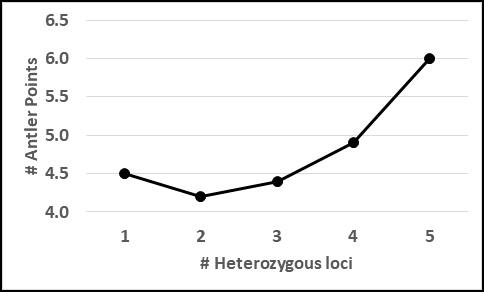
Heterosis
in Odocoileus deer
For a captive population of White-Tailed
Deer (Odocoileus virginianus) at Savannah River,
Georgia, the number of antler points (a desirable trait
for trophy hunters) is plotted against the observed number of heterozygous
allozyme loci out of 7 possible. These data are consistent
with the theory of Heterosis,
that increased heterozygosity increases somatic quality generally,
irrespective of the effect of the particular loci examined.
Heterosis differs from hybrid vigor
(q.v.) in that the latter is the result of a cross
between two homozygous lines in which the hybrid offspring are
necessarily heterozygous at most or all loci. A correlation
between somatic vigor and measured number of heterozygous loci
relies on an assumption that the observed loci are responsible
for the trait of interest, and (or) that the observed loci are
an accurate estimate of overall heterozygosity. The
heterotic effect typically cannot be attributed to any
loci in particular.
Redrawn
from Johns et al. (1992) ; text ©2021 Steven M Carr

